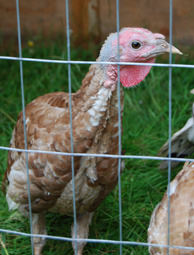
Courtesy USDA/ Michael Smith
The USDA is working to eradicate Asian longhorned beetles that are infesting and killing hardwood trees in the Northeast and the Midwest.
The USDA’s Animal and Plant Health Inspection Service needs help detecting and preventing the spread of the Asian longhorned beetle (Anoplophora glabripennis), a serious pest of hardwood trees.
Federal, state and local partners are working to eradicate active Asian longhorned beetle infestations in portions of Massachusetts, New York and New Jersey. Infestations have been eradicated in Illinois and Hudson County, N.J.
While the Asian longhorned beetle does not pose a risk to human health, it is extremely dangerous to hardwood trees. The Asian longhorned beetle has killed healthy maple, ash, birch, elm, European mountain ash, hackberry, horse chestnut, katsura, London plane, mimosa, poplar and willow trees. To date, the beetle has caused the destruction of more than 69,000 hardwood trees in the United States.
“July is the time of year when adult beetles are emerging from a winter spent growing and developing deep inside the hardwood tree they’ve infested, and they are easy to see if you know what to look for,” said Christine Markham, national director of the Asian longhorned beetle cooperative eradication program. “It is important that residents familiarize themselves with the signs of an [Asian longhorned beetle] infestation and monitor their hardwood trees and surrounding areas for this destructive pest.”
Identifying the ALB
The Asian longhorned beetle is approximately 1 to 1½ inches long, is shiny black with random white spots and has six legs. Its antennae, which are longer than the insect’s body, are banded black and white. Its feet are black and sometimes appear with a bluish tint. Adult beetles typically first appear during the month of July and will continue to be present throughout the summer and into the early fall months. The Asian longhorned beetle can be found anywhere, including on trees, benches, cars, patios and outdoor furniture, sides of houses, and sidewalks.
Prevent ALB Spread From Firewood
The beetle can also be found and unknowingly transported in firewood. Cutting a tree into firewood will not kill the Asian longhorned beetles developing inside it, and adult beetles can still emerge from the wood, thereby spreading an infestation to new areas. Firewood from regulated areas must be used within the regulated area.
If you see signs of Asian longhorned beetle infestation on your firewood, please call the USDA or your state department of agriculture immediately. Infested firewood also presents a very real threat to the nation’s forests, not only from the Asian longhorned beetle, but from other invasive species, such as the emerald ash borer. APHIS is asking residents not to move firewood and to purchase firewood locally from the area where it will be burned.
If You Detect an ALB Infestation
If you see the Asian longhorned beetle or other signs of an infestation, or if you have questions about Asian longhorned beetle control and eradication efforts, please call your local APHIS state plant health director, your state department of agriculture or the Asian longhorned beetle cooperative eradication program in your state.
- For residents in New England, call the ALB cooperative eradication program in Massachusetts, call 866-702-9938.
- For the ALB cooperative eradication program in New York, call 866-265-0301 or 877-STOP-ALB.
- For the ALB cooperative eradication program in New Jersey, call 866-233-8531 or 866-BEETLE1.
If you find an Asian longhorned beetle, you can help to stop the spread by capturing it, placing the insect in a jar and freezing it—this will preserve the insect for identification. Early detection of Asian longhorned beetle infestations is very important because it can limit an infested area and the number of trees destroyed.
More information about the ALB can be found on the APHIS website by clicking on “Asian Longhorned Beetle” under the “Hot Issues” heading. You may also logon to BeetleBusters.info.















